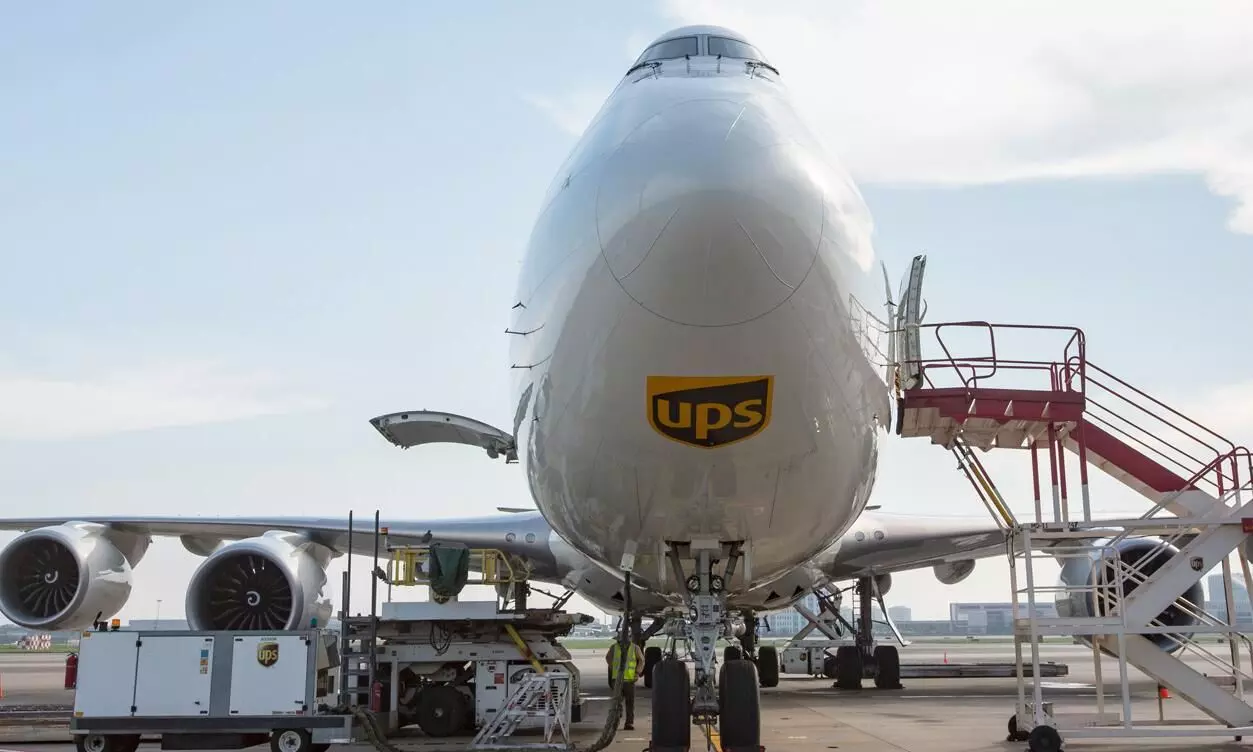
UPS banking on integrated network for USPS contract
We don't have to run all of the (USPS) air volume through our main air hub at Worldport: Carol Tome, CEO, UPS

Carol Tome, Chief Executive Officer, UPS feels the United States Postal Service (USPS) air cargo business fits beautifully with the strategy to grow the B2B business.
"To win, we put together an innovative and differentiated solution that leverages our integrated network and existing assets. The USPS air cargo business will contribute to top line growth and be accretive to consolidated and U.S. domestic operating margins," Tome said during the earnings call after the Q12024 results.
Tome went on to add that UPS will be moving away from the traditional hub-and-spoke models while dealing with the USPS contract. "We don't have to run all of the air volume through our main air hub at Worldport. Of course, we will use Worldport, but we will also use our regional gateways.
"That allows for splits to occur outside of the network, so they'll be built in origin and then we will bypass the main hub and go point-to-point. This is an integrated solution that's very different from what I think the former provider offered. We also will use all of the assets of our integrated network, and that will allow us to actually optimise block hours. Now, in terms of the investments that we need to make to services volume, we have plenty of space on our existing aircraft.
"So we won't be purchasing any aircraft. We will be hiring some pilots but less than 200 pilots, and we factored all of that into the cost model that we built. So this will be margin accretive."
Brian Newman, Chief Financial Officer, UPS added that the company is moving quickly "to begin onboarding this cargo. We will leverage our integrated network and existing assets, and we expect the majority of the volume will fit within our current U.S. domestic daytime flight operations. Our operators and engineers are already planning the network to support the complete transition to UPS in the third quarter."
Photo Credit: USPS
The revenue and expense associated with USPS air cargo, Newman says, "would show up in the Supply Chain Solutions (SCS) other line in our financial reporting. Adding the USPS air cargo volume to our existing network will result in a higher share of the network cost being allocated to SCS, indirectly benefiting our U.S. domestic segment. We expect to see a benefit to operating margins this year at both the consolidated level and within the U.S. domestic segment."
The USPS volume is likely to be consistent with UPS's approach to grow in the market that leverages its integrated network, and give it a strong start to the 2026 targets of revenue to be between $108 billion and $114 billion.
Matt Guffey, Executive Vice President and Chief Commercial and Strategy Officer, UPS adds that minimums have been set in the contract. "As we built this, we identified a win-win for both the USPS and for us. We not only have it on the protection for our side and our business on what we're bringing on but also for the USPS because we want to make sure we're bringing this on as quickly as possible, and we're working collectively with them."
Focus on healthcare
Tome says UPS plans to become the No.1 complex healthcare logistics provider globally. "Healthcare companies are innovating, and so are we. Our latest example is the opening of LabPort at Worldport, our global air hub in Louisville, Kentucky.
"LabPort is unique. It's an end-of-the-runway, state-of-the-art facility built specifically for lab customers. By being at Worldport, we can deliver urgent air packages to our lab customers well before the sun comes up, so they can provide diagnostic results by early morning. And in terms of healthcare revenue, in the first quarter, revenue from our healthcare portfolio reached $2.6 billion."
Enhancing global network
Tome also highlighted the launch of Next Day flights between Shenzhen, China, and Sydney, Australia. "The addition of these flights enables faster import and export movements between 11 Asian markets in Australia. And now, exports from Australia can even reach Europe by the next business day. This enhancement further enables us to serve our customers, particularly those that are in high-tech manufacturing and healthcare as they are shifting their supply chains in response to changing international trade flows."


